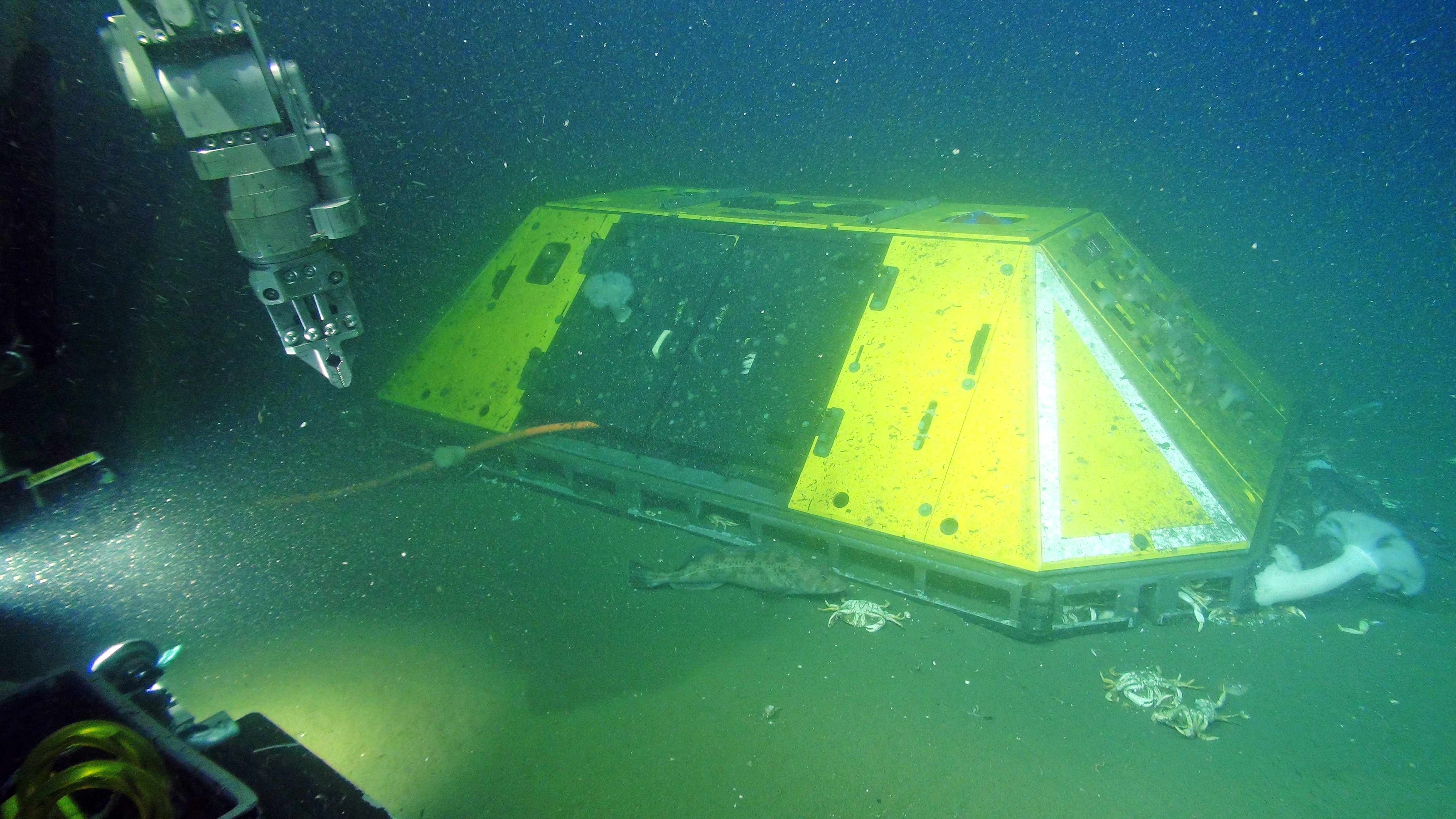The Benthic Experiment Package (BEP) is composed of a hazard-resistant frame which hosts a UW/APL-designed Low-Power Junction Box communications housing. The BEPs, like all Low-Power Junction Boxes, are each connected to a Low-Voltage Node and have an input voltage at 48 Volts DC and an input data link at 10/100BASE-T. They also have eight instrument ports that provide 12 to 48 V and has 10/100BASE-T, RS232 or RS485 data links.

The ports within each BEP are connected to a variety of sensors to measure oceanographic properties including acidity (pH), carbon dioxide, salinity, oxygen concentrations, and water currents. A hydrophone (underwater microphone) is mounted on a tripod outside of the frame to reduce noise interference from the other sensors, and is used to passively detect sounds in the ocean.
Sensors on the BEP include the following:
- Broadband Hydrophone
- Acoustic Doppler Current Profiler (ADCP)
- Conductivity-Temperature-Depth (CTD)
- Dissolved Oxygen
- Turbulent-Flow Current Meter (VEL3D)
- pH (Acidity)
- pCO2 (Carbon Dioxide)
- Optical Attenuation and Absorption

There are two BEPs deployed on the cabled array: one at the Oregon Offshore (600 m) and one at the Oregon Shelf (80 m) site, which are both part of the Endurance Array Newport Line. These sites are also the location of primary nodes PN1C and PN1D, respectively, which are the power and data hubs for the BEP Low-Power Junction Boxes, which are in turn the power and data hubs for the instrument platforms.
The Continental Shelf and Slope areas off the Oregon coast are highly productive, dynamic upwelling environments. Upwelling brings nutrients to the surface which fuels phytoplankton blooms that form the base of the ocean food web. In recent years, upwelling has also brought onto the shelf hypoxic (low oxygen) waters that can be harmful to organisms in the area, like Dungeness crabs. By sampling in this area, the OOI seeks to gain better insight into upwelling dynamics of this system. The BEPs are located near the base of surface moorings and profiler moorings, providing complementary seafloor data to the water column data, allowing for a full picture of shelf/slope dynamics.
